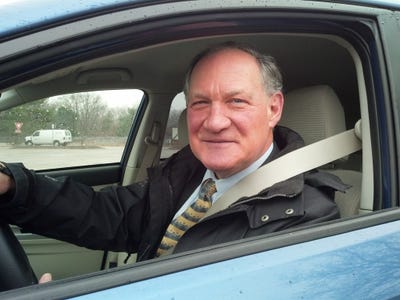‘Can’t Fix Broken Auto Dealer’
“Too many dealers trying to sell to fewer customers won’t work anymore,” says Bruce Harris, VW Finance’s risk manager.


“You can’t fix a broken auto dealer,” declares Bruce Harris, vice president and chief risk officer for Volkswagen Credit Inc., noting that several auto retailers are hurting.
Many dealers face the combination of a severe sales slump and unavailable credit to purchase new inventory. Some auto retailers are going out of business as a result. That’s almost inevitable, considering the circumstances, Harris says.
“Too many dealers trying to sell to fewer customers won’t work anymore,” he says at a recent Auto Finance Summit in Las Vegas. “If revenue streams have dried up and if customers aren’t there, risk-based (loan) pricing isn’t going to help.”
Paul Kramarz, American Honda Finance’s manager-risk and analysis, agrees. “In a bad economy, you can’t price your way out of credit losses.”
The National Automobile Dealers Assn. says the No.1 issue facing dealers is a drought of floorplanning credit, making it hard to borrow money for inventory purchases.
The trade group, seeking help in financing inventory purchases, is scheduled to meet March 6 with President Barack Obama’s auto taskforce.

VW Credit risk manager Bruce Harris.
Cautious lenders are asking two questions when it comes to floor-plan financing, Harris says. “One, ‘Where’s the repayment going to come from?’ Two, ‘If that fails, then what?’”
He adds: “If you can’t answer those two questions, you shouldn’t make the loan. When you get someone like Bill Heard dealer group that was around for decades and then files for bankruptcy, well there is not much to talk about.”
Troubled dealers either should rehabilitate or “get out of the portfolio,” says David Shevsky, director-consumer credit-risk management for GMAC Financial Services. “Now is the time to put processes in place and keep them in place.”
Lenders are keeping an eye on dealers, trying to assess which ones are financially healthy and which are not.
To many lenders, “the biggest risk right now is floorplan,” says Chuck Roscow, Chevy Chase Bank’s senior vice president-consumer lending division. “It is important to do floorplan audits.”
“It’s time to look at the dealer base,” says Dawn Harvey, administrative vice president of M&T Bank. “There are people who aren’t going to be here in a few years.”
About 900 dealerships went out of business or consolidated last year, according to the NADA. Several hundred more are expected to do the same this year.
Meanwhile, auto lenders are taking a no-nonsense approach today – and that can hit dealers where it hurts.
Lenders are taking harsher actions if they discover fudged information on auto-loan paperwork sent by dealerships on behalf of customers.
“Dealers typically aren’t bad, it’s usually a bad apple at the dealership responsible for something like that,” says Roscow.
That includes falsely saying a consumer made a substantial down payment. Lenders are more likely to approve a loan and at a more favorable rate if a sizable down payment is part of the deal.
“There are cases when the dealership information lists a $3,000 down payment, but then we repossess the car and pull the deal jacket, and there is no receipt for a down payment,” Roscow says.
He adds: “When that happens, we’ll collect that $3,000 from the dealership. No receipt means someone at the dealership has fluffed the deal.”
Roscow says his bank is “experimenting” with a plan to share losses with a dealership if certain vouched-for auto loans go bad.
He explains: “If the dealer has given a personal guarantee that a particular customer is a good credit risk, and if that turns out to not be the case and we have to repossess the car, it doesn’t go to the auction. It goes to the dealership.”
Essentially, the message is: “Here’s your problem,” Roscow says.
About the Author
You May Also Like





